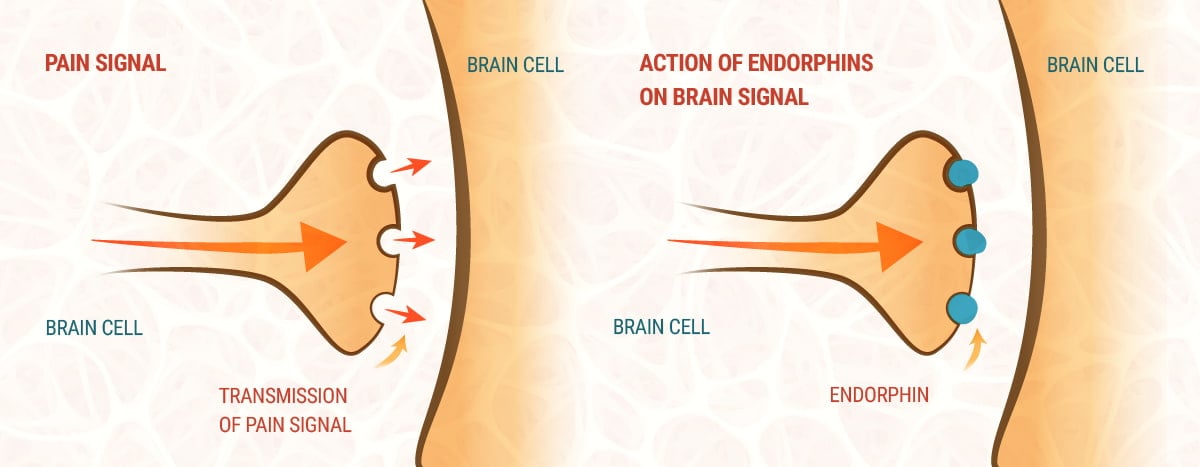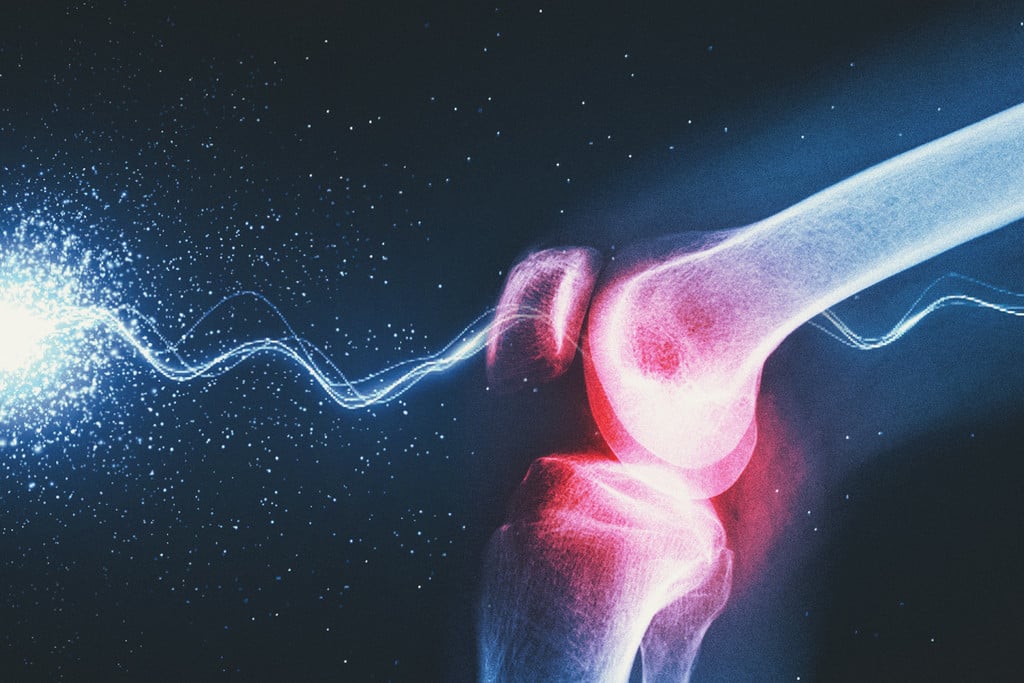.

CBD and its relationship with pain
Given its promising results in animal studies, not to mention its good safety profile and non-intoxicating properties, might CBD have a beneficial effect on pain? Take a look at the current research on CBD and pain, the different methods of CBD intake, and some important considerations on taking the cannabinoid.
Contents:
Pain is a complex and individual experience. Our unique biology, social environment, and past experiences influence our perception of pain—something that makes it very difficult to treat. With the challenges that chronic pain management presents and the controversy surrounding opioid pain medication, doctors and patients alike are keen to find an effective alternative. Some have set their sights on CBD.
Cannabis and Pain
The ongoing legalization of cannabis in Europe and North America means that cultural acceptance has increased the appeal of using cannabis for physical wellness. Cannabis contains over a hundred different cannabinoids, the two most abundant of which are tetrahydrocannabinol (THC) and cannabidiol (CBD). In terms of scientific study, THC has received the lion’s share of the focus, but that is now changing.
Our understanding of the relationship between CBD and pain is evolving; however, there is a need for comprehensive clinical research to obtain conclusions on its efficacy. Most of the enlightening studies thus far have been performed in animal models of pain. Nevertheless, many of these studies have centred on CBD's unique interaction with the endocannabinoid system.
CBD and the Endocannabinoid System
The endocannabinoid system (ECS) is a cell-signalling system in humans and other mammals that plays a regulatory role in the body. Among other components, it consists of receptors that interact with naturally occurring cannabinoids—known as endocannabinoids—throughout the brain and body.
There are over 100 known cannabinoids in cannabis, all with different profiles and effects—and all are believed to interface with the ECS to some degree. It’s known that the ECS regulates bodily functions related to metabolism, appetite, mood, anxiety, and pain perception, but the impact of cannabinoids on these functions is unclear.


Does CBD Help With Pain?
While non-psychotropic, CBD may help the body utilise its endocannabinoids, which act as neurotransmitters. A 2015 study[1] examined whether CBD could influence ECS receptors by increasing levels of anandamide. Anandamide (AEA) is an endocannabinoid associated with reducing pain perception and improving mood.
Additionally, a study[2] published in May 2019 in the Journal of Pain Research examined the mutual relationship between the cannabinoids THC and CBD and chronic pain. The study aimed to evaluate the tolerability and safety of a mouth spray containing both cannabinoids. The product was administered as an add-on natural care product for patients suffering from severe chronic pain.
Studies on CBD and Pain
Finding effective treatments for pain is essential to returning sufferers to good physical and mental health. In what follows, we take a look at the current investigations on CBD in regard to pain conditions and symptoms.
-
Inflammation
Acute inflammation is the body's reaction to injury. In a review[3] published in 2019, CBD was observed for its potential impact on inflammation and oxidative stress via ECS-mediated mechanisms. Although this review is inconclusive and focuses largely on animal studies, it sets the stage for in-depth clinical research.
-
Arthritis
Arthritis is an informal name for joint pain or joint disease. Nearly 60 million adults and 300,000 children have arthritis in some form. There are over 100 types of arthritis and related conditions, and common symptoms include swelling, pain, stiffness, and decreased range of motion.
A 2016 study[4] administered CBD gel to a rat model of arthritis for four days to observe any changes in the condition. This research assessed whether administration of topical CBD could cause long-lasting positive effects.
-
CBD and Neuropathic Pain
Neuropathic pain is caused by nerve irritation. Symptoms include pins and needles, excruciating pain, and sensitivity issues.
Research regarding CBD’s potential in neuropathic conditions is of mixed opinion. A 2018 review[5] looked at the potential harms associated with the use of CBD and THC for pain, and highlighted the need for further analysis. The review centred around 16 studies (with a total of 1750 participants) analysing the effects of cannabis on different neurological complaints.
How To Use CBD for Pain?
You can purchase CBD in an array of forms. Depending on your intention, different methods of CBD administration may be more or less suitable. Take a look at the methods below to determine which is best for you.
CBD Topicals
CBD balms, salves, and ointments are known as "topical" products. In other words, you apply them directly to the skin. One advantage of topical application is that it only affects the area to which it is applied. The CBD does not make its way into the bloodstream. This makes topicals ideal for those targeting specific areas.


Oral and Sublingual CBD
For those looking to benefit the body from within, there are CBD oils, tinctures, and sprays that can be taken orally or placed under the tongue (sublingually). The latter allows CBD to enter the bloodstream directly, making for fast-acting effects. Oral intake, on the other hand, results in longer-lasting effects, but as the CBD must first make its way through the digestive system, it also takes longer to reach circulation.
Generally, it is easy to control your CBD dose with oral sprays, tinctures, and oils. Oils are typically a combination of CBD extract in a plant-based carrier oil, such as olive oil or hemp oil. Capsules are essentially a pill form of CBD oil containing consistent doses. Edibles are food products; think CBD brownies, gummies, and snacks.

Vaping CBD
Vaping has become a popular method of taking CBD, and indeed, it’s one of the most bioavailable. This means that a large amount of the total CBD content of a given product will actually make it into the bloodstream, in this case via the alveoli of the lungs. There is an assumption that vaping is safer than smoking; however, there are dangers associated with both practices.

Is CBD Approved for Pain?
So far, pharmaceutical CBD has only been approved for use in a limited number of instances. The oral spray Sativex (a 1:1 THC:CBD product) is approved in certain countries to treat multiple sclerosis and cancer pain. Epidiolex, also an oral spray, is supported within the US for certain types of epilepsy and seizures associated with tuberous sclerosis. Currently, no research supports CBD alone as a remedy for pain in humans.
Side Effects of CBD
The legal status of cannabis is constantly evolving. Add in the desire for a fresh, plant-derived product, and it's easy to see why the demand for CBD is enormous. Of course, this hype is encouraged to no end by the unparalleled profit margins of manufacturers.
If you are thinking of taking CBD, it is essential to understand the potential side effects. CBD is commonly advertised as a "cure-all" silver bullet with no risks or side effects, but this is untrue. While side effects of CBD are typically mild and non-life-threatening (e.g. diarrhoea, reduced appetite, fatigue), the most significant risk is that CBD may interact with blood thinners, heart medications, and immunosuppressants, among other medications.
Altering the levels of these critical medications in the blood could lead to catastrophic repercussions. More information also needs to be compiled about the safety of CBD in particular populations, such as the elderly, children, the immunocompromised, and pregnant and breastfeeding women.
There is a lack of comprehensive toxicological research devoted to CBD safety. One laboratory study[6] from 2019 demonstrated that when delivered orally to mice, CBD could cause liver damage. The mice that received the highest amounts of CBD exhibited clear evidence of hepatotoxicity. Hepatotoxicity is injury or damage caused to the liver by exposure to drugs. While these results aren’t indicative of such effects in humans, they're still worth considering.
That aside, the World Health Organisation deemed CBD to be well-tolerated with a good safety profile in humans in their critical review report[7] on CBD, published in 2018.


CBD Is an Unregulated Supplement
CBD is currently classed as an unregulated supplement, so it's hard to know exactly what you are getting. Regulating drug and health authorities worldwide have issued numerous warnings to companies attempting to market unapproved products allegedly containing CBD. Some of these products have been tested for their chemical content, and many were found to make inaccurate claims regarding CBD levels and quality.
You do not have to look far to find anecdotal reports supporting CBD use. That doesn't mean it will be successful for everyone, however. Everyone is unique, and what may suit one person may not suit another. This is never more true than with pain.
Many other factors, such as mood, stress level, environment, previous experiences, and pre-existing medical conditions, affect pain perception. Remember that some of the testimonials you will read are clever marketing designed to lure shoppers into buying more products. It's worth noting that the CBD market is expected to hit $20 billion by the year 2024[8].
Should You Use CBD for Pain?
If you are considering trying CBD, we recommend speaking to your doctor for guidance. Although CBD is non-intoxicating and has a low potential for abuse, it can interact with various medications, and is not for everyone. Still, CBD is an attractive candidate for daily use given its effects on the endocannabinoid system and the body as a whole. However, until there is solid clinical evidence, it is difficult to assess the suitability of CBD for pain management.
- Cannabinoids and Epilepsy https://www.ncbi.nlm.nih.gov
- Effectiveness and tolerability of THC:CBD oromucosal spray as add-on measure in patients with severe chronic pain: analysis of 12-week open-label real-world data provided by the German Pain e-Registry https://www.ncbi.nlm.nih.gov
- Antioxidative and Anti-Inflammatory Properties of Cannabidiol https://www.ncbi.nlm.nih.gov
- Transdermal cannabidiol reduces inflammation and pain-related behaviours in a rat model of arthritis https://www.ncbi.nlm.nih.gov
- Cannabis‐based medicines for chronic neuropathic pain in adults https://www.cochranelibrary.com
- Molecules | Free Full-Text | Hepatotoxicity of a Cannabidiol-Rich Cannabis Extract in the Mouse Model | HTML https://www.mdpi.com
- CANNABIDIOL (CBD) https://www.who.int
- How to Start a CBD Business https://www.businessnewsdaily.com







































